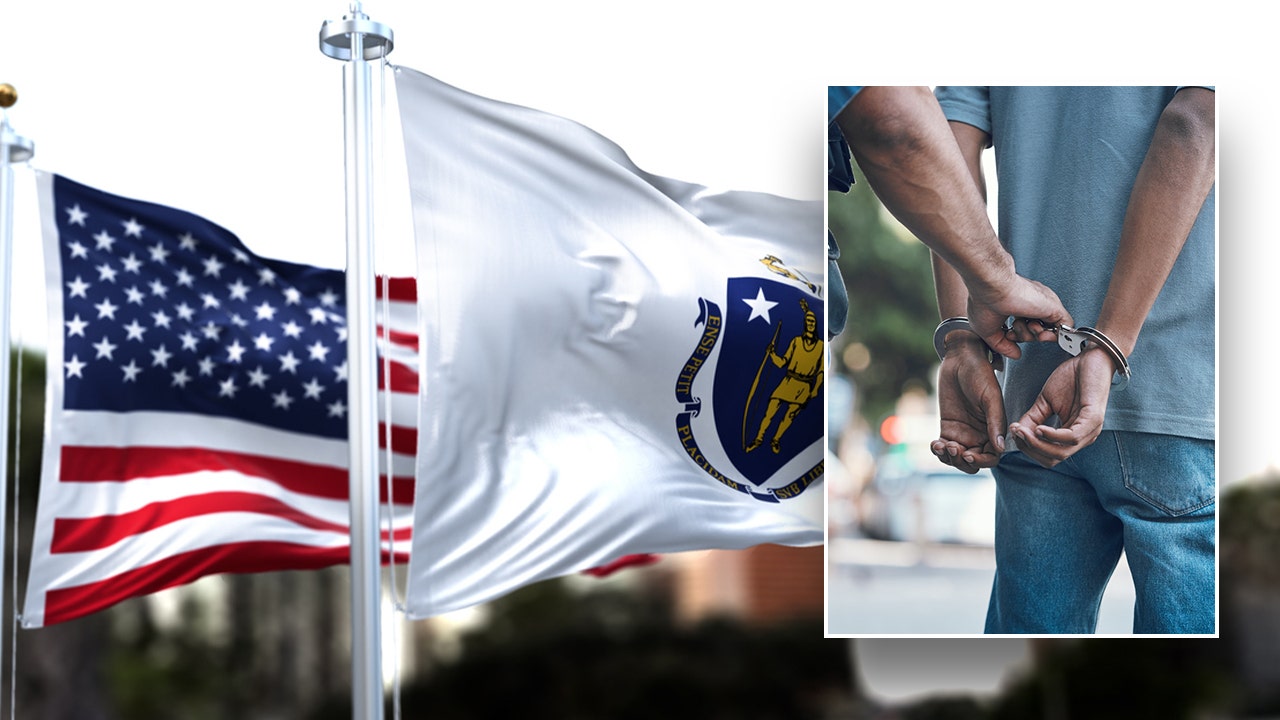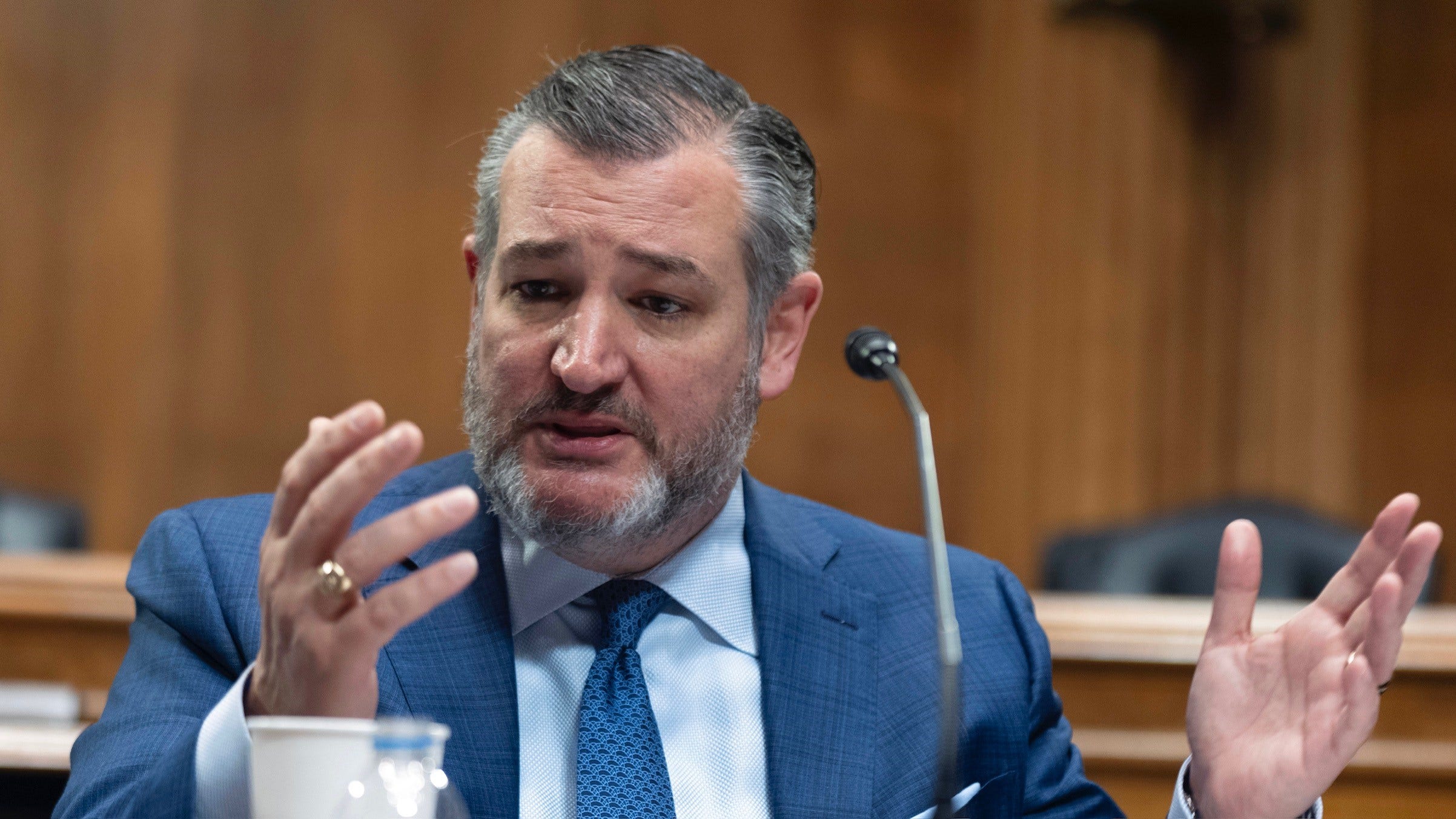Education
Administration Urges Colleges to Pursue Diversity Despite Affirmative Action Ban

The Biden administration, in its first guidance on how to handle the Supreme Court’s ban on affirmative action, offered colleges and universities on Monday something of a road map for how to achieve diverse classes while abiding by the court decision.
The administration said schools still had broad latitude when it comes to expanding its pool of applicants, through recruitment, and retaining underrepresented students through diversity and inclusion programs, like affinity clubs.
Education Secretary Miguel Cardona, in a news briefing, made it clear that the administration faced the task of enforcing a court ruling that it strongly disagreed with. “This is a moment of great urgency in higher education,” Dr. Cardona said.
Alluding to how the enrollment of students of color had initially plunged in states that have banned affirmative action, he said, “We cannot afford that kind of backsliding on a national scale.”
The guidance from the Education and Justice Departments — in what is known as a “Dear Colleague” letter, accompanied by a questions-and-answers document — did not address some of the more contentious issues around the court’s decision, including how it would apply to hiring, student scholarships for particular racial groups and potential conflicts between state and federal policies.
The administration’s letter urged colleges to maintain or create pipeline programs to prepare and recruit a diverse student body. It said the court’s decision “does not require institutions to ignore race when identifying prospective students for outreach and recruitment,” as long as all students, whether targeted or not, “enjoy the same opportunity to apply and compete for admission” into the recruitment programs.
Conservative activists have threatened to challenge any recruitment methods that could be seen as a proxy for consideration of race. But the Biden administration’s letter endorsed recruiting students through targeted characteristics — including whether they live in a city, suburb or rural area, their family background, experiences of adversity including discrimination, and whether the students speak more than one language.
At least one critic of racial preferences found the guidance on outreach to be fair.
“I actually think it’s a good idea to target racial groups that have been historically underserved by an institution and try to find ways to increase the chance of applying,” said Richard Sander, a law professor at the University of California Los Angeles.
He said it was unlikely that anyone would challenge such a program, “and if they did, you’d have a pretty good chance of surviving, because it’s separated from the admissions process.”
The letter and seven pages of questions and answers did not directly address certain other questions — both within and beyond academia — that have been raised by the Supreme Court decision, including whether schools could continue to offer scholarships that selected winners based at least in part on their race, and which have been an engine of diversity in college admissions.
Nor did the guidance address potential conflicts between policies being created by state authorities and those being articulated at the federal level.
Immediately after the Supreme Court decision was handed down on June 29, Andrew Bailey, the Missouri attorney general, wrote to dozens of universities and municipalities across the state, including the University of Missouri system, warning them to immediately end race-based affirmative action policies. The letter said the directive applied not just to college admissions but also to scholarships, employment and law reviews.
Republican leaders are challenging minority scholarship programs in Wisconsin, and Eli Capilouto, president of the University of Kentucky, has suggested that scholarships there could be affected by the ruling.
And the attorneys general of 13 states, including Alabama, Arkansas and Kansas, have warned chief executives of Fortune 100 companies that their companies would face “serious legal consequences” if they pursued race-based employment preferences and diversity policies.
The Biden administration’s letter also broadly endorsed diversity, equity and inclusion efforts on campus, which have been heavily criticized by conservatives who call them expensive liberal boondoggles.
“It is important that students — particularly those who are underrepresented, feel a sense of belonging and support once on campus,” the administration’s guidance said. Schools could build this sense of belonging through diversity offices, campus cultural centers and affinity groups, “including those that have a race-related theme,” as long as they were open to all students regardless of race, it said.
The letter may provide encouragement to critics of legacy admissions, the preferences some institutions give to the children of alumni, which critics have called affirmative action for the rich. Critics say legacy students take up slots that could have been awarded to qualified students without connections.
“Nothing in the decision prevents an institution from determining whether preferences for legacy students or children of donors, for example, run counter to efforts to promote equal opportunities for all students in the context of college admissions,” the letter said.
“Dear Colleague” letters do not have the force of law. But they can be powerful and politically charged nonetheless. An example is a “Dear Colleague” letter in 2011 that expanded the protections of Title IX — the federal education law that forbids discrimination on the basis of sex — to cover sexual harassment and violence.
That letter outlined the procedure for campus investigations into sexual assault. It was rescinded during the Trump administration after critics, particularly the mothers of accused men, contended that it created a process that was biased toward accusers.

Education
Video: Biden Apologizes for U.S. Mistreatment of Native American Children

new video loaded: Biden Apologizes for U.S. Mistreatment of Native American Children
transcript
transcript
Biden Apologizes for U.S. Mistreatment of Native American Children
President Biden offered a formal apology on Friday on behalf of the U.S. government for the abuse of Native American children from the early 1800s to the late 1960s.
-
The Federal government has never, never formally apologized for what happened until today. I formally apologize. It’s long, long, long overdue. Quite frankly, there’s no excuse that this apology took 50 years to make. I know no apology can or will make up for what was lost during the darkness of the federal boarding school policy. But today, we’re finally moving forward into the light.
Recent episodes in Politics
Education
Video: Los Angeles Bus Hijacked at Gunpoint

new video loaded: Los Angeles Bus Hijacked at Gunpoint
transcript
transcript
Los Angeles Bus Hijacked at Gunpoint
The person suspected of hijacking a bus which killed one person, was taken into custody after an hourlong pursuit by the Los Angeles Police Department early Wednesday morning.
-
“Get him.”
Recent episodes in Guns & Gun Violence
Education
The Youngest Pandemic Children Are Now in School, and Struggling

The pandemic’s babies, toddlers and preschoolers are now school-age, and the impact on them is becoming increasingly clear: Many are showing signs of being academically and developmentally behind.
Interviews with more than two dozen teachers, pediatricians and early childhood experts depicted a generation less likely to have age-appropriate skills — to be able to hold a pencil, communicate their needs, identify shapes and letters, manage their emotions or solve problems with peers.
A variety of scientific evidence has also found that the pandemic seems to have affected some young children’s early development. Boys were more affected than girls, studies have found.
“I definitely think children born then have had developmental challenges compared to prior years,” said Dr. Jaime Peterson, a pediatrician at Oregon Health and Science University, whose research is on kindergarten readiness. “We asked them to wear masks, not see adults, not play with kids. We really severed those interactions, and you don’t get that time back for kids.”
The pandemic’s effect on older children — who were sent home during school closures, and lost significant ground in math and reading — has been well documented. But the impact on the youngest children is in some ways surprising: They were not in formal school when the pandemic began, and at an age when children spend a lot of time at home anyway.
The early years, though, are most critical for brain development. Researchers said several aspects of the pandemic affected young children — parental stress, less exposure to people, lower preschool attendance, more time on screens and less time playing.
Yet because their brains are developing so rapidly, they are also well positioned to catch up, experts said.
The youngest children represent “a pandemic tsunami” headed for the American education system, said Joel Ryan, who works with a network of Head Start and state preschool centers in Washington State, where he has seen an increase in speech delays and behavioral problems.
Not every young child is showing delays. Children at schools that are mostly Black or Hispanic or where most families have lower incomes are the most behind, according to data released Monday by Curriculum Associates, whose tests are given in thousands of U.S. schools. Students from higher-income families are more on pace with historical trends.
But “most, if not all, young students were impacted academically to some degree,” said Kristen Huff, vice president for assessment and research at Curriculum Associates.
Recovery is possible, experts said, though young children have not been a main focus of $122 billion in federal aid distributed to school districts to help students recover.
“We 100 percent have the tools to help kids and families recover,” said Catherine Monk, a clinical psychologist and professor at Columbia, and a chair of a research project on mothers and babies in the pandemic. “But do we know how to distribute, in a fair way, access to the services they need?”
What’s different now?
“I spent a long time just teaching kids to sit still on the carpet for one book. That’s something I didn’t need to do before.”
David Feldman, kindergarten teacher, St. Petersburg, Fla.
“We are talking 4- and 5-year-olds who are throwing chairs, biting, hitting, without the self-regulation.”
Tommy Sheridan, deputy director, National Head Start Association
Brook Allen, in Martin, Tenn., has taught kindergarten for 11 years. This year, for the first time, she said, several students could barely speak, several were not toilet trained, and several did not have the fine motor skills to hold a pencil.
Children don’t engage in imaginative play or seek out other children the way they used to, said Michaela Frederick, a pre-K teacher for students with learning delays in Sharon, Tenn. She’s had to replace small building materials in her classroom with big soft blocks because students’ fine motor skills weren’t developed enough to manipulate them.
Michaela Frederick, a pre-K teacher in Sharon, Tenn., playing a stacking game with a student.
Aaron Hardin for The New York Times Preschoolers do not have the same fine motor skills as they did prepandemic, Ms. Frederick said.
Aaron Hardin for The New York Times
Perhaps the biggest difference Lissa O’Rourke has noticed among her preschoolers in St. Augustine, Fla., has been their inability to regulate their emotions: “It was knocking over chairs, it was throwing things, it was hitting their peers, hitting their teachers.”
Data from schools underscores what early childhood professionals have noticed.
Children who just finished second grade, who were as young as 3 or 4 when the pandemic began, remain behind children the same age prepandemic, particularly in math, according to the new Curriculum Associates data. Of particular concern, the students who are the furthest behind are making the least progress catching up.
The youngest students’ performance is “in stark contrast” to older elementary school children, who have caught up much more, the researchers said. The new analysis examined testing data from about four million children, with cohorts before and after the pandemic.
Data from Cincinnati Public Schools is another example: Just 28 percent of kindergarten students began this school year prepared, down from 36 percent before the pandemic, according to research from Cincinnati Children’s Hospital.
How did this happen?
“They don’t have the muscle strength because everything they are doing at home is screen time. They are just swiping.”
Sarrah Hovis, preschool teacher, Roseville, Mich.
“I have more kids in kindergarten who have never been in school.”
Terrance Anfield, kindergarten teacher, Indianapolis
One explanation for young children’s struggles, childhood development experts say, is parental stress during the pandemic.
A baby who is exposed to more stress will show more activation on brain imaging scans in “the parts of that baby’s brain that focus on fear and focus on aggression,” said Rahil D. Briggs, a child psychologist with Zero to Three, a nonprofit that focuses on early childhood. That leaves less energy for parts of the brain focused on language, exploration and learning, she said.
During lockdowns, children also spent less time overhearing adult interactions that exposed them to new language, like at the grocery store or the library. And they spent less time playing with other children.
Kelsey Schnur, 32, of Sharpsville, Pa., pulled her daughter, Finley, from child care during the pandemic. Finley, then a toddler, colored, did puzzles and read books at home.
But when she finally enrolled in preschool, she struggled to adjust, her mother said. She was diagnosed with separation anxiety and selective mutism.
“It was very eye-opening to see,” said Ms. Schnur, who works in early childhood education. “They can have all of the education experiences and knowledge, but that socialization is so key.”
Preschool attendance can significantly boost kindergarten preparedness, research has found. But in many states, preschool attendance is still below prepandemic levels. Survey data suggests low-income families have not returned at the same rate as higher-income families.
“I have never had such a small class,” said Analilia Sanchez, who had nine children in her preschool class in El Paso this year. She typically has at least 16. “I think they got used to having them at home — that fear of being around the other kids, the germs.”
Time on screens also spiked during the pandemic — as parents juggled work and children cooped up at home — and screen time stayed up after lockdowns ended. Many teachers and early childhood experts believe this affected children’s attention spans and fine motor skills. Long periods of screen time have been associated with developmental delays.
Heidi Tringali, an occupational therapist in Charlotte, N.C., playing with a patient.
Travis Dove for The New York Times
Children are showing effects of spending time on screens, Ms. Tringali said, including shorter attention spans, less core strength and delayed social skills.
Travis Dove for The New York Times
Heidi Tringali, a pediatric occupational therapist in Charlotte, N.C., said she and her colleagues are seeing many more families contact them with children who don’t fit into typical diagnoses.
She is seeing “visual problems, core strength, social skills, attention — all the deficits,” she said. “We really see the difference in them not being out playing.”
Can children catch up?
“I’m actually happy with the majority of their growth.”
Michael LoMedico, second-grade teacher, Yonkers, N.Y.
“They just crave consistency that they didn’t get.”
Emily Sampley, substitute teacher, Sioux Falls, S.D.
It’s too early to know whether young children will experience long-term effects from the pandemic, but researchers say there are reasons to be optimistic.
“It is absolutely possible to catch up, if we catch things early,” said Dr. Dani Dumitriu, a pediatrician and neuroscientist at Columbia and chair of the study on pandemic newborns. “There is nothing deterministic about a brain at six months.”
There may also have been benefits to being young in the pandemic, she and others said, like increased resiliency and more time with family.
Some places have invested in programs to support young children, like a Tennessee district that is doubling the number of teaching assistants in kindergarten classrooms next school year and adding a preschool class for students needing extra support.
Oregon used some federal pandemic aid money to start a program to help prepare children and parents for kindergarten the summer before.
For many students, simply being in school is the first step.
Sarrah Hovis, a preschool teacher in Roseville, Mich., has seen plenty of the pandemic’s impact in her classroom. Some children can’t open a bag of chips, because they lack finger strength. More of her students are missing many days of school, a national problem since the pandemic.
But she has also seen great progress. By the end of this year, some of her students were counting to 100, and even adding and subtracting.
“If the kids come to school,” she said, “they do learn.”
-
Business1 week ago
Column: OpenAI just scored a huge victory in a copyright case … or did it?
-

 Health1 week ago
Health1 week agoBird flu leaves teen in critical condition after country's first reported case
-

 Business5 days ago
Business5 days agoColumn: Molly White's message for journalists going freelance — be ready for the pitfalls
-
World1 week ago
Sarah Palin, NY Times Have Explored Settlement, as Judge Sets Defamation Retrial
-

 Politics4 days ago
Politics4 days agoTrump taps FCC member Brendan Carr to lead agency: 'Warrior for Free Speech'
-

 Science2 days ago
Science2 days agoTrump nominates Dr. Oz to head Medicare and Medicaid and help take on 'illness industrial complex'
-
/cdn.vox-cdn.com/uploads/chorus_asset/file/25739950/247386_Elon_Musk_Open_AI_CVirginia.jpg)
/cdn.vox-cdn.com/uploads/chorus_asset/file/25739950/247386_Elon_Musk_Open_AI_CVirginia.jpg) Technology3 days ago
Technology3 days agoInside Elon Musk’s messy breakup with OpenAI
-

 Lifestyle4 days ago
Lifestyle4 days agoSome in the U.S. farm industry are alarmed by Trump's embrace of RFK Jr. and tariffs














